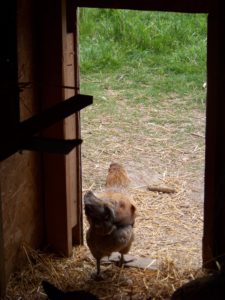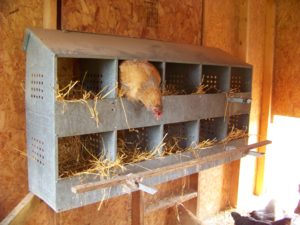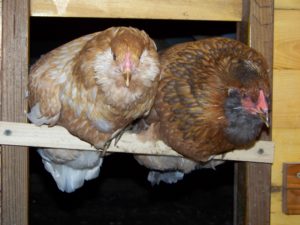 We just set up an additional chicken coop for our breeding hens this spring. It’s been a while since I set up a new coop and I was impressed with how easy it is to meet a chicken’s needs with these inexpensive screw-together coops. It’s like IKEA for chickens!
We just set up an additional chicken coop for our breeding hens this spring. It’s been a while since I set up a new coop and I was impressed with how easy it is to meet a chicken’s needs with these inexpensive screw-together coops. It’s like IKEA for chickens!
I’m happy with this coop for a breeding pen, but a little disappointed in that the manufacturers claimed it would comfortably hold 8 chickens. In seeing just three of our Easter Egger hens in this coop, I feel like they need additional space, so we are building an addition to the run.
I would feel bad for 8 chickens who considered this home year-round without being let out to pasture at least once a day.
So this brings me to my first requirement for ever chicken coop.
Space
 “They” say that chickens need at LEAST 10 square feet, especially if you are not free-ranging.
“They” say that chickens need at LEAST 10 square feet, especially if you are not free-ranging.
A better gauge, in my opinion, is to note how fast is your coop getting dirty? Cleaning your coop once a week is always a good idea, but if by the end of the week the coop is trashed, it might be a sign that your space is too small. Are your eggs getting dirty? Are the feeders getting pooped on? Do the chickens have to climb over each other to get to different areas? I think common sense works better than an actual figure.
When in doubt, give as much space as you can afford. Chickens do better with ample room.
Security from Predators
 Everybody loves chicken! That includes foxes, raccoons, owls, hawks, coyotes, the neighbor’s dog, etc.
Everybody loves chicken! That includes foxes, raccoons, owls, hawks, coyotes, the neighbor’s dog, etc.
Make sure your coop is secure against predators, especially the run. Hardware cloth seems to stand up to inquisitive wildlife better than chicken wire, so if you have a choice between the two, I’d choose hardware cloth. Predators like raccoons also have a harder time reaching through the small holes of hardware cloth.
Protect from the sky, under the ground and at night.
An overhead covering is also a good idea to protect against flying predators, and be sure to protect against digging animals like dogs and coyotes.
Protection from weather
Mostly in the form of wind and rain barrier, and the sun. Chickens actually do quite well in extreme cold so long as they’re dry and out of the wind. They also need ventilated shade in the heat/sun.
Ventilation
While you want your coop secure, you don’t want to seal it up so tight that there is no air circulation. Coops need ventilation to allow odors like ammonia, heat, and condensation to escape.
Without a properly ventilated coop, your chickens can suffer from respiratory problems and other diseases.
Egg Boxes
 Chickens are convenient in that if you give them a place to lay their eggs, they will deliver! You should supply 1 nesting box per 5-6 hens. Nesting boxes should be 12’-14” square.
Chickens are convenient in that if you give them a place to lay their eggs, they will deliver! You should supply 1 nesting box per 5-6 hens. Nesting boxes should be 12’-14” square.
Roosts
In the wild, a chicken’s natural instinct is to roost in a tree branch for the night. Chickens are almost blind in the dark, so this elevated sleeping spot helps protect them from ground predators.
 In the coop setting, when the sun goes down, chickens will have this instinct as well.
In the coop setting, when the sun goes down, chickens will have this instinct as well.
Roosts can be anything from a large stick, a broomstick handle, or a 2×2 board.
Roosts should be placed higher than your nesting boxes. This will detract from your chickens sleeping in the boxes and soiling the egg box bedding.













2 Comments
To;Jennifer Sartell,
I like what you have to say, it’s helpful. We have a flock of about a hundred layers, plus a good big rooster. Good=won’t attack me or farm visitors, too often. Big at least 5lbs. . They will fight to the death for the hens. Last big guy came out in 2nd.place with a bear encounter but it only killed one layer. We free range; no pen at all, let them out early and they go in at dark. Hens don’t like much snow so they are shut up November to late April . We keep the electric standby, heated coop around 20C- 70F, a small exhaust fan runs steady and the hens have nearly 3sq.ft.each. Rather than just roosts we have ‘hen shelves’ all the way around at about a height of 3ft. and depth 16 -18 in. We live in central Labrador. Jim
The more space you have the less health issues you will deal with. Manufactures base space requirements on commercial needs– meat birds are harvested before they even get a full year under their wings, and layers are typically harvested after two years of laying. The health of the birds is not a main concern. Extra roosts in the coop is always a good idea, they can be lower, just to give chickens a place to hang out during the day if they are having a bad molt, etc. In the cold New England winter, I wrap the coop in plastic, but also make sure there is some high venting. I place piles of leaves in to give them something to do when being away or bad weather has them locked in their coop and covered run. Always have space for dust bathing. Wood ash is a good supplement to the dust bathing area. Such an area is a must for good health. Keep the treats to a minimum and the water fresh.